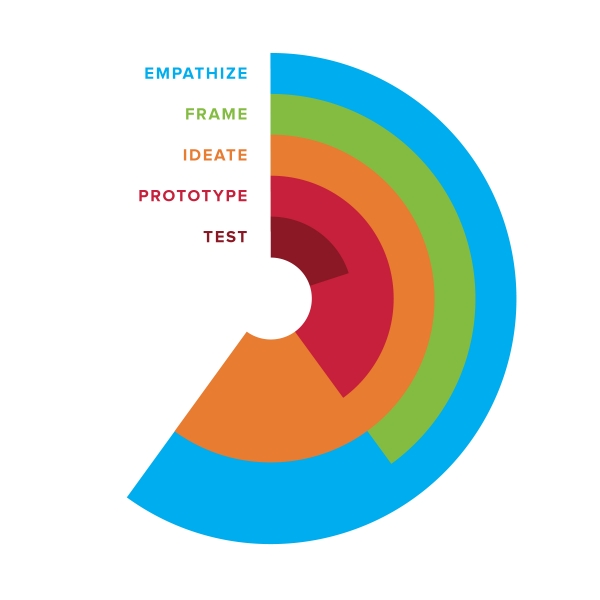If you frequent publications like Harvard Business Review and The Wall Street Journal for the latest business trends, you’ve probably read something about design thinking. Organizations like Ford, Walgreens, and Planned Parenthood have used this methodology to solve major challenges and design new products, services, and experiences.
This process is increasingly adopted to solve a wider range of problems, and it can serve as a wonderful antidote to rampant silos and lack of collaboration plaguing modern organizations. I have a theory that on the other side of the silo trend we’ll see collaboration emerge as a permission-to-play value for businesses seeking to innovate, but I digress…
For those who haven’t tried it, the process can sound initimidating. People often ask: Do I need to be a graphic designer? Is this just another business buzz word? What is design thinking anyway?
Here’s our basic definition:
Design thinking is a creative, iterative approach to problem-solving that places humans at the center of the process.
The process is often broken down into distinct steps or phases. While different models have varying labels, they cover the same basics. Our approach looks like this:

Empathy
The process starts with understanding. Empathy is all about tapping into the perspectives of the people you serve to get to the heart of the problem, which will ultimately inform more meaningful solutions.
Frame
This step is about clearly defining the opportunity to get everyone solving from a point of shared understanding. Through your empathy research, you will have uncovered a ton of data. Framing is essentially sense-making – finding themes and patterns from what you’ve collected.
Ideate
This phase is about exploring and thinking broadly about the challenge. The goal is to generate a wide range of potential solutions. Ideation often includes a combination of diverging and converging, or having people work independently, then together. In this way, people can build on one another’s ideas.
Protoype
Prototyping is about building out models of your ideas to see how those solutions work. You might have quick and simple models, or something more detailed and complex – sometimes referred to as low and high fidelity. The important this is getting something “real” enough to let people interact with the prototype.
Test
For this step, you ask people to experiment with your prototype to see how it actually works in real life. These interactions can illuminate areas for improvement and iteration.
Keep in mind, these steps don’t always occur in a linear fashion – sometimes it is necessary to go back to a step, or to work on two concurrently. But it does always start with empathy.
Human-centered design is a great process for breaking down and solving big, fuzzy challenges.
To-may-toe / To-mah-toe
While some may say it’s just semantics, I actually prefer the term human-centered design over design thinking for a couple of reasons. One of the core tenets of this approach is to put people at the center of the process. Mentioning people in the name honors that important aspect. “Thinking” might also confuse people or misrepresent what really happens. The process isn’t about simply brainstorming or theorizing. It is very active, helping you bring ideas to life – not just dream them up.
No matter what you call it – human-centered design is a great process for breaking down and solving big, fuzzy challenges. Want to learn more? Join us for a human-centered design workshop!
